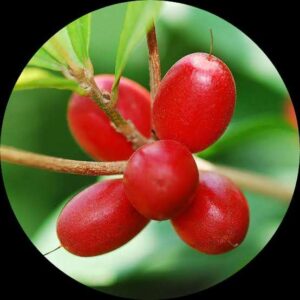- Empty cart.
- Continue Shopping
Malgova ( Mango)
Original price was: ₹500.00.₹375.00Current price is: ₹375.00.
Genus : Philippine Mangoes
“The Malgova Mango Plant allows you to cultivate your own Malgova mango tree and savor the delightful and fragrant Malgova mangoes. These mangoes are known for their rich flavor and sweet taste. Start growing your own Malgova mangoes today.”
Malgova, also known as Malgova Mango or Malgova Seedless Mango, is a popular cultivar of mango (Mangifera indica) that is known for its large size, sweet taste, and juicy flesh. Here is a more detailed description of the Malgova Mango fruit plant:
Tree Description:
- Malgova mango trees are large, evergreen trees that can reach heights of up to 30 meters when fully mature.
- The tree has a dense, symmetrical crown with dark green, glossy leaves that are typically lanceolate or oblong in shape, and arranged alternately on the branches.
- The bark of the Malgova mango tree is typically dark brown, rough, and fissured.
- The tree produces small, fragrant flowers that are typically pinkish-white or yellowish in color and are borne in panicles or clusters.
- The flowers are usually followed by the development of fruits.
Fruit Description:
- Malgova mangoes are known for their large size, often weighing between 500 grams to 1 kilogram each.
- The fruit has an oblong or oval shape with a thick, leathery skin that is usually green when unripe and turns yellow to yellowish-brown when mature.
- The skin may have some russeting, which is a brownish rough texture on the surface, which is a characteristic of Malgova mangoes.
- The flesh of Malgova mangoes is typically juicy, fibrous, and bright yellow to orange in color, with a rich, sweet taste and aroma.
- Malgova mangoes are known for their minimal or no fiber content, which makes them highly sought after for their smooth texture.
- The fruit typically contains a large, flat, and oblong-shaped seed or pit in the center, which is usually not edible.
Cultivation:
- Malgova mangoes are primarily grown in South India, particularly in the states of Tamil Nadu, Andhra Pradesh, and Karnataka.
- They prefer tropical or subtropical climates with warm temperatures, and they are not tolerant of frost.
- Malgova mango trees require well-drained, fertile soils, and are usually planted in full sun for optimal growth and fruit production.
- They require regular watering, especially during the flowering and fruiting stages, and benefit from balanced fertilization.
- Pruning is important for shaping the tree, improving air circulation, and promoting fruiting, and it is usually done during the dormant season.
- Malgova mangoes are typically harvested when mature and ripe, which is usually indicated by the skin color turning yellowish-brown and a slight softening of the flesh.
Uses:
- Malgova mangoes are primarily consumed fresh, either on their own or in various culinary applications, such as desserts, salads, smoothies, and sauces.
- They are highly prized for their large size, sweet taste, and minimal fiber content, which makes them suitable for eating as a whole fruit or for making mango pulp and puree.
- Malgova mangoes are also used in the production of dried fruit, canned fruit, juices, nectars, and fruit preserves.
- In some cultures, mangoes are used in traditional medicines for their potential health benefits, as they are a good source of vitamins, minerals, fiber, and antioxidants.
- Additionally, mango wood is sometimes used in carpentry, furniture-making, and for fuel.
In conclusion, Malgova Mango is a popular cultivar known for its large size, sweet taste, juicy flesh, and minimal fiber content. It is primarily grown in South India and is used for various culinary and medicinal purpos













Reviews
There are no reviews yet.